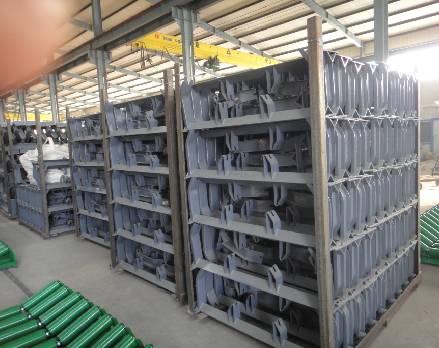 Afrikaans
Afrikaans  Albanian
Albanian  Amharic
Amharic  Arabic
Arabic  Armenian
Armenian  Azerbaijani
Azerbaijani  Basque
Basque  Belarusian
Belarusian  Bengali
Bengali  Bosnian
Bosnian  Bulgarian
Bulgarian  Catalan
Catalan  Cebuano
Cebuano  Corsican
Corsican  Croatian
Croatian  Czech
Czech  Danish
Danish  Dutch
Dutch  English
English  Esperanto
Esperanto  Estonian
Estonian  Finnish
Finnish  French
French  Frisian
Frisian  Galician
Galician  Georgian
Georgian  German
German  Greek
Greek  Gujarati
Gujarati  Haitian Creole
Haitian Creole  hausa
hausa  hawaiian
hawaiian  Hebrew
Hebrew  Hindi
Hindi  Miao
Miao  Hungarian
Hungarian  Icelandic
Icelandic  igbo
igbo  Indonesian
Indonesian  irish
irish  Italian
Italian  Japanese
Japanese  Javanese
Javanese  Kannada
Kannada  kazakh
kazakh  Khmer
Khmer  Rwandese
Rwandese  Korean
Korean  Kurdish
Kurdish  Kyrgyz
Kyrgyz  Lao
Lao  Latin
Latin  Latvian
Latvian  Lithuanian
Lithuanian  Luxembourgish
Luxembourgish  Macedonian
Macedonian  Malgashi
Malgashi  Malay
Malay  Malayalam
Malayalam  Maltese
Maltese  Maori
Maori  Marathi
Marathi  Mongolian
Mongolian  Myanmar
Myanmar  Nepali
Nepali  Norwegian
Norwegian  Norwegian
Norwegian  Occitan
Occitan  Pashto
Pashto  Persian
Persian  Polish
Polish  Portuguese
Portuguese  Punjabi
Punjabi  Romanian
Romanian  Russian
Russian  Samoan
Samoan  Scottish Gaelic
Scottish Gaelic  Serbian
Serbian  Sesotho
Sesotho  Shona
Shona  Sindhi
Sindhi  Sinhala
Sinhala  Slovak
Slovak  Slovenian
Slovenian  Somali
Somali  Spanish
Spanish  Sundanese
Sundanese  Swahili
Swahili  Swedish
Swedish  Tagalog
Tagalog  Tajik
Tajik  Tamil
Tamil  Tatar
Tatar  Telugu
Telugu  Thai
Thai  Turkish
Turkish  Turkmen
Turkmen  Ukrainian
Ukrainian  Urdu
Urdu  Uighur
Uighur  Uzbek
Uzbek  Vietnamese
Vietnamese  Welsh
Welsh  Bantu
Bantu  Yiddish
Yiddish  Yoruba
Yoruba  Zulu
Zulu conical roller
Understanding Conical Roller Bearings An In-Depth Overview
Conical roller bearings, also known as tapered roller bearings, represent a significant development in the field of mechanical engineering and design. They are widely utilized in various applications due to their unique structure and functioning, which enables them to support heavy loads while reducing friction and wear.
Structure and Design
At its core, a conical roller bearing consists of an inner and outer ring separated by conically shaped rollers. The conical shape of the rollers allows them to distribute loads across a larger contact area, which significantly enhances the bearing's load-carrying capacity. This design is particularly beneficial in applications that require the accommodation of both radial and axial loads.
The inner ring, or raceway, is designed to house the shaft, while the outer ring fits around the housing. When the shaft rotates, the conically oriented rollers roll between these two rings, providing smooth movement. The angled nature of the rollers facilitates movement in both directions, making tapered roller bearings ideal for applications where misalignment may occur.
Applications
Conical roller bearings are widely used in automotive applications, such as in wheel hubs, transmissions, and differentials. Their ability to handle both axial and radial loads makes them perfect for wheel bearings, which experience tremendous forces during vehicle operation. Furthermore, they are essential components in various industrial machinery, including gearboxes and conveyor systems.
In addition to automotive and industrial applications, tapered roller bearings are also found in aerospace, marine, and agricultural machinery. Their resilience against fatigue and wear allows them to perform reliably even in the most demanding environments.
conical roller

Advantages
One of the primary advantages of conical roller bearings is their high load capacity
. The tapered shape of the rollers allows for the separation of load components; thus, they can accommodate higher radial loads compared to standard ball bearings. Moreover, they are designed to withstand axial loads, making them versatile and suitable for various dynamic conditions.Another significant benefit is their ability to perform well under misalignment situations. Many industrial machines can experience slight misalignments due to wear or manufacturing tolerances, but conical roller bearings maintain functionality even in these situations, reducing the risk of failure.
The materials used in the production of these bearings often include high-quality steel, which adds to their overall strength and durability. Additionally, advanced manufacturing techniques and surface treatments enhance the performance and longevity of the bearing, ensuring a longer service life with lower maintenance needs.
Maintenance and Lifecycle
Like all mechanical parts, conical roller bearings require regular maintenance. Proper lubrication is crucial to minimize wear and tear. Insufficient lubrication can lead to increased friction, generating heat and potentially resulting in premature failure. It is advisable to periodically check the bearing condition during machinery inspections. Signs of wear, such as abnormal noises or increased vibration, should be addressed immediately to prevent catastrophic failures.
Conclusion
In summary, conical roller bearings are a vital component in modern engineering, offering excellent performance and durability across a variety of applications. Their unique design allows them to handle both radial and axial loads effectively, making them indispensable in sectors such as automotive, industrial, aerospace, and more. As technology continues to advance, the development of even more efficient and reliable tapered roller bearings will further enhance their applicability and performance in complex machinery, ultimately driving innovation in various fields. Understanding the intricate workings and benefits of these bearings is essential for engineers and designers looking to optimize the performance and reliability of their equipment.
-
Revolutionizing Conveyor Reliability with Advanced Rubber Lagging PulleysNewsJul.22,2025
-
Powering Precision and Durability with Expert Manufacturers of Conveyor ComponentsNewsJul.22,2025
-
Optimizing Conveyor Systems with Advanced Conveyor AccessoriesNewsJul.22,2025
-
Maximize Conveyor Efficiency with Quality Conveyor Idler PulleysNewsJul.22,2025
-
Future-Proof Your Conveyor System with High-Performance Polyurethane RollerNewsJul.22,2025
-
Driving Efficiency Forward with Quality Idlers and RollersNewsJul.22,2025





























